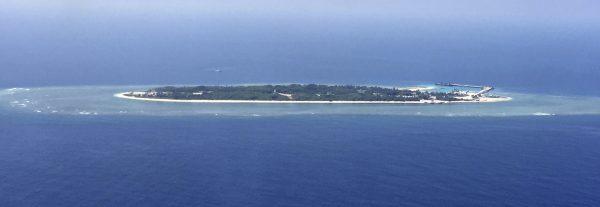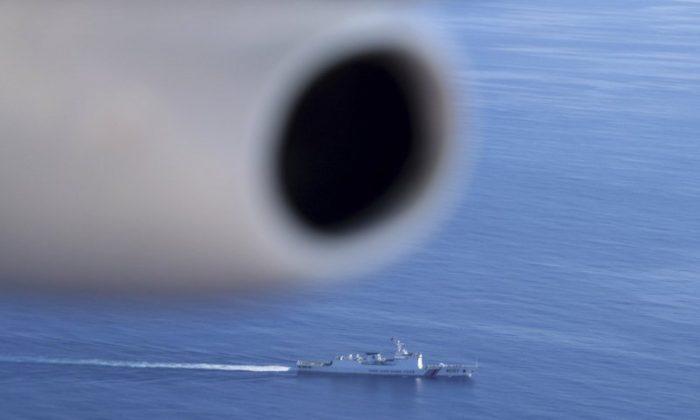BEIJING—Australian navy helicopter pilots were hit by lasers while exercising in the South China Sea, forcing them to land as a precaution, a witness said, describing the latest incident in the disputed waters where China has stepped up the defense of its sweeping territorial claims.
Scholar Euan Graham, who was onboard the Royal Australian Navy flagship HMAS Canberra on a voyage from Vietnam to Singapore, said that the lasers had been pointed from passing fishing vessels while the Canberra was being trailed by a Chinese warship.
China maintains a robust maritime militia in the South China Sea composed of fishing vessels equipped to carry out missions just short of combat. China claims the strategic waterway virtually in its entirety and is sensitive to all foreign naval action in the area, especially by the United States and allies such as Australia.
“Was this startled fishermen reacting to the unexpected? Or was it the sort of coordinated harassment more suggestive of China’s maritime militia? It’s hard to say for sure, but similar incidents have occurred in the western Pacific,” Euan Graham wrote on the website The Strategist run by the Australian Strategic Policy Institute, an independent, non-partisan think tank based in Canberra. The account of the incident appeared on May 28.
Similar incidents involving lasers and the Chinese military have also been reported as far away as Djibouti, where the United States and China have bases. Last year, the United States complained to China after lasers were directed at aircraft in the Horn of Africa nation that resulted in minor injuries to two American pilots.
Graham said that while bridge-to-bridge communications with the Chinese during the voyage were courteous, the Chinese requested the Australian warships notify them in advance of any corrections to their course.
That was something the Australian navy was “not about to concede while exercising its high-seas freedoms,” Graham wrote.
He wrote that the constant presence of Chinese vessels shadowing foreign ships appeared to indicate that the Chinese fleet had grown large enough to allow it to have vessels lying in wait for just such orders.
Graham, who is executive director of La Trobe Asia at La Trobe University in Australia, was one of several academics invited to observe Australia’s engagement exercise Indo-Pacific Endeavour 2019.
The United States and its allies insist on the right to sail and fly anywhere in the area is permitted under international law, despite China’s differing interpretation of such guidelines.

The Chinese Communist Party (CCP) immediately rejected the tribunal’s decision. A statement from its Foreign Ministry said it viewed the decision as “null and void and has no binding force.” It would “neither accept nor participate in the arbitration unilaterally initiated by the Philippines.” The true impact is uncertain given the tribunal has no power of enforcement, The Associated Press reported on July 12, 2016.
Brunei, Indonesia, Malaysia, the Philippines, Taiwan and Vietnam have competing claims to the waterway, through which passes about a third of global seaborne trade.





